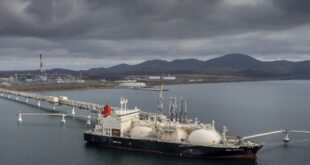The euro began its downtrend against the US dollar at the end of September after reaching a 15-month high. Despite a potential near-term rebound, analysts suggest the euro’s weakness may persist.
The euro continued to weaken against the US dollar ahead of the crucial European Central Bank (ECB) interest rate decision, set to be announced later today. The EUR/USD pair has fallen by 3% from its September high of over 1.12, settling in the mid-1.18 range during the Asian session on Thursday.
Markets widely expect the ECB to lower its interest rate by a further 0.25%, bringing the deposit rate down to 3.25%. However, if the ECB adopts a more hawkish tone than expected, this could trigger a rebound in the euro, as markets have already reacted to the anticipated third rate cut.
Scenario for a hawkish rate cut
Despite expectations, the ECB may not be as dovish as the market anticipates. A hawkish surprise could cause a sharp rebound in the euro and push up eurozone government bond yields. While market participants are hoping for a swift trajectory of rate cuts, the central bank is likely to maintain a gradual approach in its easing cycle.
Indeed, inflation in the eurozone cooled to a below-target level of 1.8% year-on-year in September, according to preliminary data from Eurostat. The final data, which will be released today ahead of the ECB’s decision, typically aligns with the initial estimate, meaning it is unlikely to alter expectations for a 0.25% rate cut unless inflation is revised upwards.
Speaking at the European Parliament’s Committee on Economic and Monetary Affairs, ECB President Christine Lagarde said: “Looking ahead, inflation might temporarily increase in the fourth quarter of this year as previous sharp falls in energy prices drop out of the annual rates, but the latest developments strengthen our confidence that inflation will return to target in a timely manner. We will take that into account in our next monetary policy meeting in October,” confirming the likelihood of a rate cut in October.
However, she also noted that the ECB would follow a “data-dependent approach” and added: “Policy rates will be kept sufficiently restrictive for as long as necessary to achieve our aim. We are not pre-committing to a particular rate path.”
Carsten Brzeski, Global Head of Macro at ING Research, highlighted in a report that “a hawkish surprise cannot be entirely ruled out.” He added: “The decision to cut rates will be much more controversial than markets currently think.”
Euro may remain weak in the long term
The value of a currency is influenced by a combination of fundamental and market-driven factors. Key elements include central bank interest rates, inflation, economic trajectory, and political and economic stability. At present, all these fundamentals seem to weigh down the euro due to below-target inflation, economic stagnation, political uncertainty, and the ECB’s easing cycle.
Michael McCarthy, Market Strategist and Chief Commercial Officer at Moomoo Financial Inc., told Euronews: “While Lagarde will almost certainly re-emphasise a ‘meeting by meeting’ approach, the downtrend in growth and inflation data suggests this statement will likely be disregarded. I expect a small bounce in the euro following the announcement, but the currency is likely to resume its medium-term downtrend, retreating from its two-and-a-half-year highs.”
He also pointed out that recent downward pressure on the euro has been compounded by the strength of the US dollar, as markets moved away from “the most dovish scenarios in the United States.”
The Federal Reserve (Fed) commenced its easing cycle with a significant 0.5% rate cut in September, initially sending the US dollar lower. However, the dollar has rebounded this month following a series of resilient economic data from the US, particularly in the labour market. Money markets are now pricing in a 0.25% rate cut by the Fed in November, rather than the previously anticipated 0.5%. The contrasting policy expectations between the two central banks have contributed to the euro’s weakness against the US dollar.
 topnaijanews Stay informed with the latest Nigerian news at your fingertips
topnaijanews Stay informed with the latest Nigerian news at your fingertips
